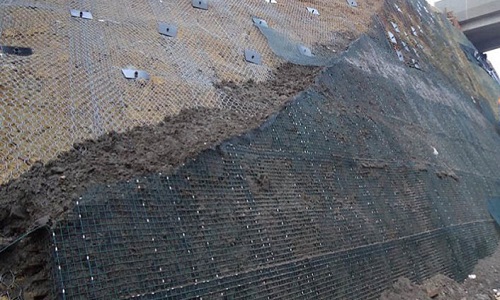Soil Nailing is a method to improve the stabilizing slopes and soil improvement. This method is primarily used to bring soil stability where landslides can cause severe problems.
This cycle comprises of fortifying the regular ground with firmly dispersed steel or metal bars or segments (i.e nails) grouted in the pre-bored openings and giving front face uphold.
Soil nail dividers are by and large developed from top to down. It is called soil nailing on the grounds that it resembles having a nail being pounded into the dirt where the nails are the steel bars.

( source: soil-nailing.com )
Table of Contents
Types Of Nails:
- Driven nails
- Grouted nails
- Corrosion protected nails
- Jet grouted nails
- Launched nails.
Application of Soil Nailing:
- For slope stabilization.
- Revamp existing retaining structures.
- Reconstruction of existing retaining structures.
- Roadway cuts.
- Tunnel portals.
- Underbridge abutments.
- Temporary excavation shoring.
Advantages Of Soil Nailing:
- It is environment friendly, less noise, fewer traffic obstructions, and less impact on surrounding areas.
- Soil nailing can be done in congested places, soil nails are short compared to braced excavation
- The soil nailing process is fast and less material required
- Soil nailing is suitable at sites in remote areas because smaller equipment is generally needed.
Disadvantages Of Soil Nailing:
- Metal Soil nails can corrode easily.
- Existing utilities in the soil can cause the problem in the soil nailing process
- Soil nailing is not appropriate in a high water table area
- It required skilled workers.
Note: Regarding the disadvantages of soils:
1. Soil nails can be galvanized so they don’t corrode.
2. The nails can be used in areas with a high water table provided appropriate drainage measures are put in place.
